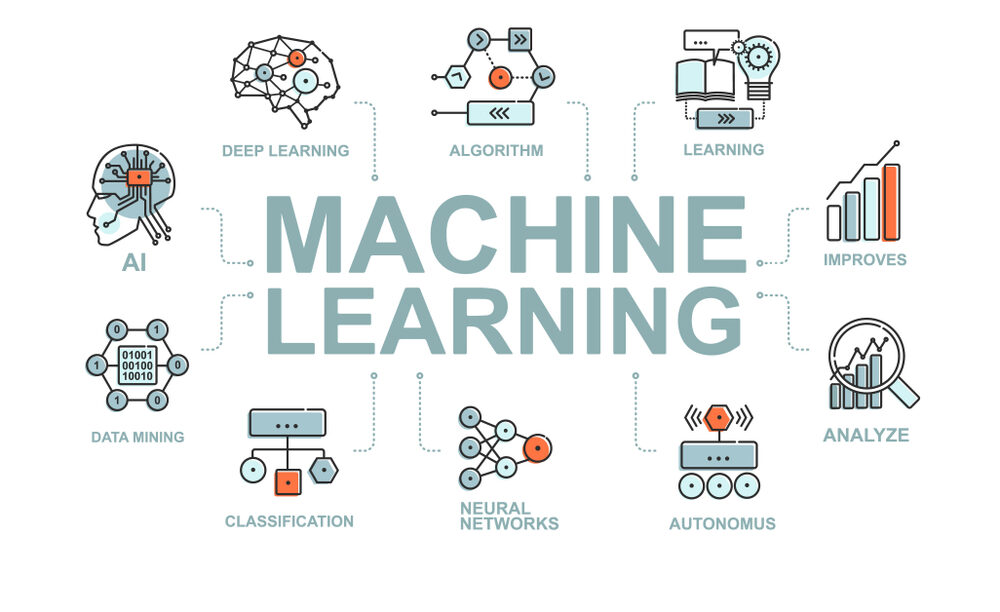Table of Contents
Introduction:
Machine learning is a subfield of artificial intelligence that deals with the development of algorithms and models that can learn from data and make predictions or take actions. It has become a hot topic in recent years due to its vast potential for solving complex problems and improving decision-making processes in various industries.
In this beginner’s guide to machine learning, we will dive into the core concepts of machine learning and its different approaches. We will also explore the various applications of machine learning, from data analysis to predictive modeling.
Before diving into machine learning, it’s important to understand the basics of artificial intelligence. AI refers to the development of computer systems that can perform tasks that typically require human intelligence, such as recognizing speech, recognizing images, and playing games. ML is a subset of AI that is focused on the development of algorithms that can learn from data and improve their performance over time.

Types of Machine Learning
There are several types of machine learning, including:
- supervised learning
- unsupervised learning
- reinforcement learning
- Supervised Learning
- Supervised learning is a type of machine learning where the algorithm is trained on labeled data, meaning the data already includes the correct output or answer.
- The algorithm learns from the data to identify patterns and relationships between the input variables and the output or target variable. Once the algorithm has been trained, it can be used to make predictions on new, unseen data.
- This type of machine learning is commonly used in classification and regression problems, such as image classification, spam detection, and stock price prediction.
- The goal of supervised learning is to build a model that accurately predicts the target variable based on the input data. To achieve this, the model must be trained on a large, representative dataset, and the quality of the predictions can be evaluated by comparing the predictions to the true target values.
- Unsupervised Learning
- It on the other hand, involves training algorithms on an unlabeled dataset, where the goal is to discover patterns and structure in the data.
- This type of machine learning is used for clustering, dimensionality reduction, and anomaly detection.
- Unsupervised learning is a type of machine learning where the algorithm is trained on unlabeled data, meaning the data does not include the correct output or answer.
- The algorithm is designed to identify patterns and relationships in the data without being told what the correct output should be. The most common types of unsupervised learning algorithms are clustering and dimensionality reduction.
- Clustering algorithms aim to divide the data into groups based on similarities and patterns in the data, while dimensionality reduction algorithms aim to reduce the number of variables in the data while retaining as much information as possible.
- Unsupervised learning is often used in exploratory data analysis to identify patterns and relationships in the data that might not be immediately apparent, and it is also used in data compression and data visualization. Unlike supervised learning, unsupervised learning algorithms are not able to make predictions, but they are useful for discovering hidden structures and relationships in the data.
- Reinforcement learning
- Reinforcement learning is a type of machine learning where the algorithm learns from its interactions with the environment.
- The goal is to maximize a reward signal over time by taking actions that lead to the highest reward.
- Reinforcement learning is used in robotics, gaming, and autonomous systems.
- Reinforcement learning is a type of machine learning that focuses on training an algorithm to make decisions and take actions in an environment to maximize a reward signal.
- It is different from supervised and unsupervised learning, as the algorithm must learn from experience by trial and error and receive feedback in the form of rewards or penalties.
- Reinforcement learning is commonly used in game playing and robotics, where an agent must learn to make decisions based on its environment and the outcomes of its actions.
- The agent must learn to balance exploration, where it tries different actions to gather information, with exploitation, where it chooses the action that is most likely to lead to the highest reward.
- Reinforcement learning algorithms are trained through a process of interaction with the environment, where the algorithm learns to choose the most optimal actions based on the feedback it receives.
- The quality of the decisions made by the algorithm improves over time, allowing it to achieve better results and achieve the maximum reward.
- Reinforcement learning is a powerful tool for solving complex problems in decision-making and control, and it has a wide range of applications in areas such as robotics, autonomous systems, and online decision-making.
Application of Machine Learning
One of the key applications of machine learning is data analysis. Machine learning algorithms can be used to perform complex computations on large datasets, such as pattern recognition, regression analysis, and cluster analysis. By automating these tasks, machine learning can save time and reduce the risk of human error.
Another important application of machine learning is predictive modeling, where the goal is to make predictions about future events based on past data. Predictive modeling is used in various industries, such as finance, healthcare, and marketing, to make data-driven decisions and improve decision-making processes.
Machine learning has also found its way into the field of natural language processing, where the goal is to enable computers to understand and process human language. Natural language processing is used in various applications, such as sentiment analysis, text classification, and machine translation.
Conclusion
In conclusion, machine learning is a rapidly advancing field that holds immense potential for solving complex problems and improving decision-making processes. From supervised learning and unsupervised learning to reinforcement learning and natural language processing, machine learning has the tools to make data-driven decisions and drive innovation. As machine learning continues to evolve, it is important for individuals and organizations to stay informed about its capabilities and applications.

